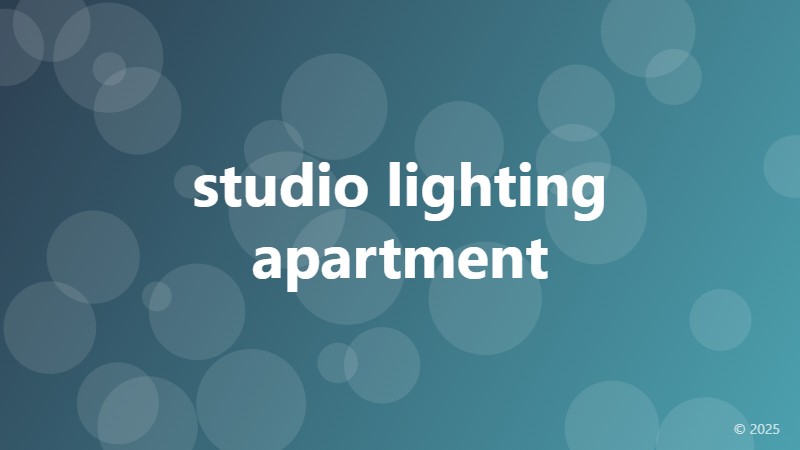studio lighting apartment

Transforming Your Apartment into a Professional Studio with Proper Lighting
When it comes to creating a professional studio in your apartment, one of the most crucial elements to consider is lighting. Proper studio lighting can make all the difference in the quality of your work, whether you're a photographer, videographer, or content creator. In this article, we'll explore the importance of studio lighting in an apartment setting and provide you with some valuable tips on how to achieve professional-grade results.
Understanding the Basics of Studio Lighting
Before we dive into the specifics of setting up a studio in your apartment, it's essential to understand the basics of studio lighting. There are three primary types of lighting: key light, fill light, and backlight. The key light is the main source of light, used to illuminate the subject's face. Fill light, on the other hand, is used to soften the shadows created by the key light. Backlight is used to separate the subject from the background.
Choosing the Right Lighting Equipment for Your Apartment Studio
When it comes to selecting the right lighting equipment for your apartment studio, there are several factors to consider. First and foremost, you'll need to decide on the type of lighting you want to use. There are two primary options: continuous lighting and strobe lighting. Continuous lighting provides a constant source of light, making it ideal for video production and live streaming. Strobe lighting, on the other hand, is better suited for still photography.
In addition to the type of lighting, you'll also need to consider the size and portability of the equipment. Since you're working in an apartment, space is likely to be limited. Look for compact and lightweight lighting solutions that can be easily stored and transported.
Setting Up Your Apartment Studio with a Limited Budget
One of the biggest misconceptions about setting up a professional studio is that it requires a massive budget. While it's true that high-end lighting equipment can be expensive, there are ways to achieve professional-grade results on a limited budget. Consider investing in DIY lighting solutions, such as softbox lights or ring lights, which can be easily assembled and customized to fit your needs.
Another cost-effective option is to repurpose everyday objects as lighting tools. For example, you can use a piece of white cardboard to bounce light onto your subject's face or use a translucent umbrella to create a makeshift softbox.
Maximizing Space in Your Apartment Studio
One of the biggest challenges of setting up a studio in an apartment is maximizing space. To make the most of your limited square footage, consider using multi-functional furniture and equipment. For example, you can use a desk that doubles as a backdrop stand or invest in a lighting kit that can be easily mounted to the wall.
Another space-saving technique is to use collapsible backdrops and lighting stands. These can be easily stored away when not in use, freeing up valuable floor space for other activities.
Conclusion
Creating a professional studio in your apartment requires careful planning and attention to detail. By understanding the basics of studio lighting, choosing the right equipment, and maximizing space, you can achieve high-quality results that rival those of a traditional studio. Remember to think outside the box and get creative with your lighting solutions – with a little practice and patience, you can produce stunning visuals that will take your content to the next level.